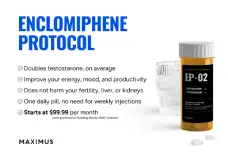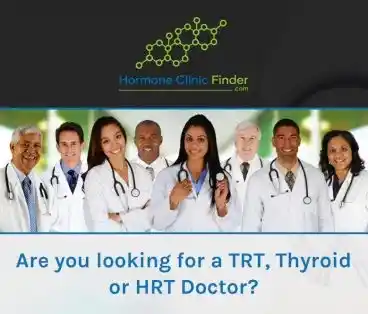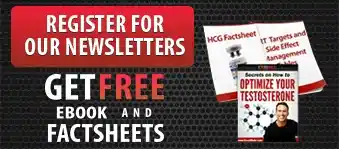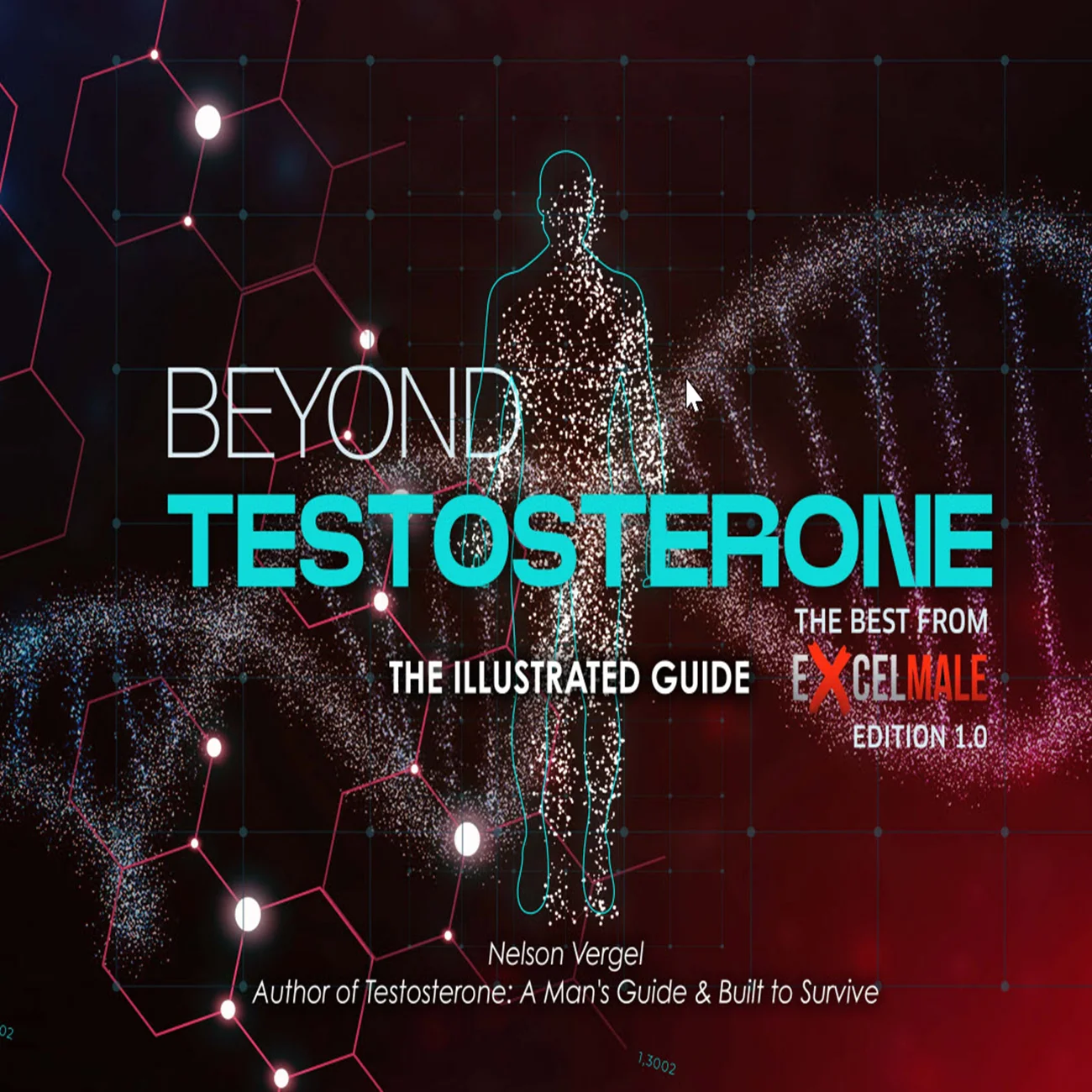Vitamin D Status Shapes the Cardiometabolic Pay-Off of Testosterone Therapy in Late-Onset Hypogonadism
Abstract
Late-onset hypogonadism (LOH) is common in aging males and is frequently accompanied by features that drive cardiovascular and metabolic disease. Separately, vitamin D insufficiency has emerged as an independent cardiometabolic threat. A 2025 prospective cohort study published in Nutrients explored the intersection of these two conditions by asking a deceptively simple question: does vitamin D status determine how well men with LOH metabolically “respond” to injectable testosterone? The researchers included 65 men, divided them based on their levels of 25-hydroxyvitamin D (25-OHD), gave all of them the same testosterone injections for six months, and regularly checked a wide range of metabolic and blood vessel health indicators. They discovered that men who started treatment with enough vitamin D, or who got it to a normal level through supplements, showed significant improvements in insulin sensitivity, cholesterol levels, inflammation, blood clotting markers, and kidney blood vessel health. In contrast, men whose vitamin D levels stayed low gained much less benefit and even had a drop in high-density lipoprotein (HDL). In contrast, men whose vitamin D remained sub-optimal derived far fewer benefits and even saw high-density lipoprotein (HDL) fallAndrogen production declines inexorably with age—by roughly 0.8 % per year after the fourth decade, according to longitudinal population data. When sexual, physical, or neuropsychological symptoms accompany biochemical androgen insufficiency, we label the cluster as late-onset hypogonadism (LOH). Researchers have quoted a prevalence of LOH in men aged 40–70 as high as 30–40%, yet underdiagnosis persists. Beyond sexual dysfunction, LOH carries a catalogue of somatic liabilities: visceral adiposity, sarcopenia, insulin resistance, and dyslipidaemia. Large observational studies link low testosterone with type-2 diabetes, metabolic syndrome, and elevated cardiovascular mortality.
Parallel to this, a vast literature has repositioned vitamin D from a skeletal vitamin to a systemic hormone influencing vascular tone, immune modulation, coagulation, and glucose homeostasis. Cardiomyocytes, endothelial cells, and vascular smooth muscle express 1-α-hydroxylase and the vitamin D receptor (VDR), while deficiency of 25-OHD correlates with incident myocardial infarction, stroke, hypertension, and insulin resistance.
When sexual, physical, or neuropsychological symptoms accompany biochemical androgen insufficiency, we label the cluster as late-onset hypogonadism (LOH). If these two issues could add up, or, as the study suggests, they might interact, with vitamin D helping testosterone to fully perform its functions in the body.
2. Study Rationale and Objectives
Previous studies showed mixed results on testosterone replacement therapy (TRT) and heart safety: some long-term studies found that TRT reduced serious heart problems, while others suggested it had no effect or could even be harmful. The heterogeneity hints at modulators that condition TRT efficacy. Vitamin D is a biologically plausible candidate because- receptors (AR) co-localise in metabolic organs (liver, adipose, muscle, kidney) and can engage in transcriptional crosstalk
- Animal and ex-vivo studies demonstrate calcitriol-driven up-regulation of AR and enhanced Leydig cell steroidogenesis
- Epidemiologically, low 25-OHD is linked to elevated inflammatory and thrombotic biomarkers that testosterone might otherwise suppress.
To determine whether baseline vitamin D status modifies the cardiometabolic effects of six-month intramuscular testosterone therapy in men with LOH.
The trial followed a prospective, matched-cohort design rather than a randomized allocation. Ethical approval and written informed consent were secured, and the protocol adhered to the Helsinki Declaration.3. Methodology
3.1 Cohort Stratification
We divided sixty-five men aged 40–75 into three vitamin D strata:| Group | 25-OHD Range | Vitamin D History | n (completed) |
|---|---|---|---|
| I | 20–30 ng/mL (insufficiency) | No supplementation | 22 |
| II | 30–60 ng/mL (replete) | Ongoing supplementation (≈ 3,000 IU/day for ≈ 43 weeks) | 22 |
| III | 30–60 ng/mL (replete) | Vitamin D-naïve | 21 |
3.2 Intervention Protocol
All participants received identical injections of 250 mg mixed testosterone esters (propionate, phenylpropionate, isocaproate, caproate) every 21 ± 3 days for six months. Group II continued their pre-study vitamin D tablets; no adjustments were authorized. Adherence was monitored by pill counts and dietary diaries.3.3 Outcomes and Biomarkers
Blood and urine sampling occurred at baseline and six months (glucose and triglycerides were also sampled at three months). The biomarker panel canvassed:- Glycaemic control: fasting glucose, insulin, HOMA-IR, TyG index (cumulative
- Lipid spectrum: total-C, LDL-C, HDL-C, triglycerides
- Renal microvascular injury: urinary albumin-to-creatinine ratio (UACR)
- Inflammation & thrombosis: high-sensitivity C-reactive protein (hs-CRP), fibrinogen, homocysteine.
- Other: serum uric acid.
- Global risk: 10-year Framingham Risk Score (FRS)
3.4 Statistical Approach
Prospective power analysis indicated ≥20 subjects per group to detect 20 % inter-group differences with 80 % power at α = 0.05; 24 were recruited to buffer attrition. Attrition indeed claimed five men, leaving 65 for per-protocol analysis. Post-hoc power remained robust (0.82).4. Baseline Characteristics
Table 1 (page 6) showed no between-group differences in BMI (~28 kg/m²), waist circumference (~100 cm), blood pressure (~133/85 mmHg), TyG index or daily alimentary vitamin D intake. However, men in Group I already exhibited higher hs-CRP, homocysteine, fibrinogen, UACR and Framingham scores despite being matched for testosterone, underscoring the cardiometabolic burden of even mild vitamin D insufficiency.
The patient-flow diagram on page 4 illustrated enrolment, matching and losses to follow-up; no systematic bias emerged in withdrawals (one per group due to TRT side-effects, two from Group III for new medications, one relocation, one non-adherence).
5. Key Results
5.1 Testosterone Dynamics
Across all groups, mean serum testosterone doubled (≈ 100 % rise), with no significant group-by-time interaction—confirming homogeneous androgen exposure. 25-OHD levels remained stable; Group I persisted in insufficiency, Groups II-III stayed replete.5.2 Insulin Sensitivity and Glycaemia
- Group II and III: HOMA-IR fell by 34–37 %, and the cumulative TyG index decreased, indicating improved hepatic and peripheral insulin sensitivity.
- Group I: A modest 6 % HOMA-IR reduction failed to reach the threshold for clinical meaning.
5.3 Atherogenic Lipids
- LDL-C dropped ~11–13 % in Groups II-III but inched up 2 % in Group I.
- HDL-C paradoxically declined 20 % in Group I, while remaining unchanged in replete groups.
- Total-C trended down 7–8 % only when vitamin D was adequate.
5.4 Uric Acid and Microvascular Injury
Uric acid, implicated in endothelial dysfunction, fell by a striking 28–35 % in vitamin D-replete men yet only 10 % in Group I. Likewise, UACR—an early harbinger of nephrovascular compromise—halved in Groups II-III but barely moved (−5 %) in insufficiency.5.5 Inflammation and Haemostatic Balance
hs-CRP plummeted 53–59 % with adequate vitamin D but a tempered 18 % with insufficiency. Homocysteine and fibrinogen echoed this pattern, each dropping ≈ 45 % vs. ≤ 7 % respectively. Such risk-marker “silencing” implies that testosterone’s anti-inflammatory genotype may be vitamin-D-dependent.5.6 Global Cardiovascular Risk
Framingham Risk Score fell 14–16 % in Groups II-III, translating to meaningful absolute risk reductions, whereas Group I paradoxically rose 4 %. Multivariate correlations showed that improvements in LDL-C, HOMA-IR, uric acid, hs-CRP, homocysteine, fibrinogen and UACR positively tracked both the magnitude of testosterone rise and baseline 25-OHD concentration.6. Mechanistic Interpretation
6.1 Androgen–Vitamin D Receptor Crosstalk
Both AR and VDR are nuclear receptors that dimerise with RXR and share overlapping response elements on metabolic gene promoters (e.g., CYP27B1, PPAR-α, SREBP-1c). Calcitriol may (a) up-regulate AR expression as shown in prostate cell-line experiments, and (b) stabilize AR-coactivator complexes, amplifying testosterone’s transcriptional reach. Inadequate vitamin D would thus blunt AR-mediated genomic programs, particularly those governing lipid handling (LDL-R, ApoB editing) and insulin signaling (IRS-1, GLUT4).6.2 Aromatase Modulation
Calcitriol enhances aromatase expression in some tissues, potentially boosting local estradiol, which exerts vasodilatory and anti-inflammatory effects in men. Low vitamin D may therefore deprive TRT of estrogen-mediated cardioprotection.6.3 Immune and Endothelial Interface
Vitamin D deficiency is characterized by M1-skewed macrophage polarization, heightened NF-κB activity and up-regulated tissue factor—conditions under which testosterone’s modest anti-cytokine properties may be insufficient to throttle inflammation and thrombosis.6.4 Renal Microcirculation
VDR signalling attenuates renin-angiotensin-aldosterone system (RAAS) over-activity and limits albuminuria. Persisting insufficiency could negate testosterone-mediated improvements in glomerular endothelial function, explaining the static UACR in Group I.7. Clinical Implications
- Vitamin D screening should be routine before initiating TRT. Even “borderline” insufficiency (20–30 ng/mL) measurably blunted metabolic dividends.
- Correcting vitamin D appears to restore TRT efficacy. Group II (historic deficiency corrected by ~3,000 IU/day) mirrored Group III, indicating reversibility.
- Composite risk scores matter. The 10-year Framingham delta favoured replete men, supporting guideline recommendations to integrate biomarker improvements into absolute-risk modelling rather than isolated metrics.
- Avoid complacency with HDL-C. Unexpected HDL erosion in insufficiency cautions against assuming testosterone is lipid-neutral in all contexts; clinicians should recheck lipids at 3–6 months, especially if vitamin D is low.
- Inflammatory & thrombotic markers are modifiable targets. The pronounced hs-CRP and fibrinogen drops suggest TRT, when combined with adequate vitamin D, can rival statins or anti-inflammatories in biomarker magnitude—an observation warranting outcome trials.
8. Study Limitations
- Non-randomized design invites residual confounding, although meticulous matching reduced baseline imbalance.
- Sample size (n=65) limits power for hard endpoints; findings are biomarker-centric.
- Exclusion of severe deficiency (< 20 ng/mL) constrains generalisation to that subgroup; effects could be larger or qualitatively different.
- Single testosterone formulation; whether findings translate to gels or longer-acting undecanoate remains open.
- Six-month horizon cannot adjudicate on ultimate MACE or mortality.
- Mechanistic biomarkers (e.g., adipokines, endothelial function tests) were not measured, leaving causal pathways somewhat inferential.
9. Conclusion
The 2025 Nutrients cohort study delivers a compelling message: vitamin D status is not a peripheral footnote but a central determinant of how robustly men with LOH benefit from testosterone therapy. Adequate 25-OHD unlocked a broad catalogue of metabolic wins—inflamed vasculature cooled, dyslipidaemia eased, insulin resistance reversed, and composite cardiovascular risk shrank. In contrast, men lingering in insufficiency reaped a fraction of these benefits and even suffered HDL attrition.In practical terms, a simple serum 25-OHD assay may predict TRT success more reliably than nuanced assessments of androgen formulations. For clinicians, pairing TRT with vitamin D correction could transform a marginal therapy into a comprehensive cardiometabolic intervention. For researchers, the study opens fertile ground to interrogate nuclear-receptor crosstalk and to refine the personalization of hormone replacement in aging men.
11. Reference
Last edited:













